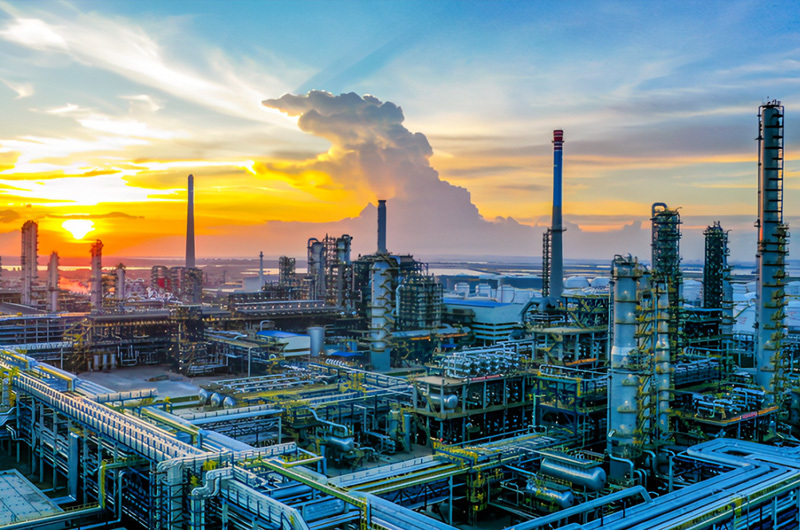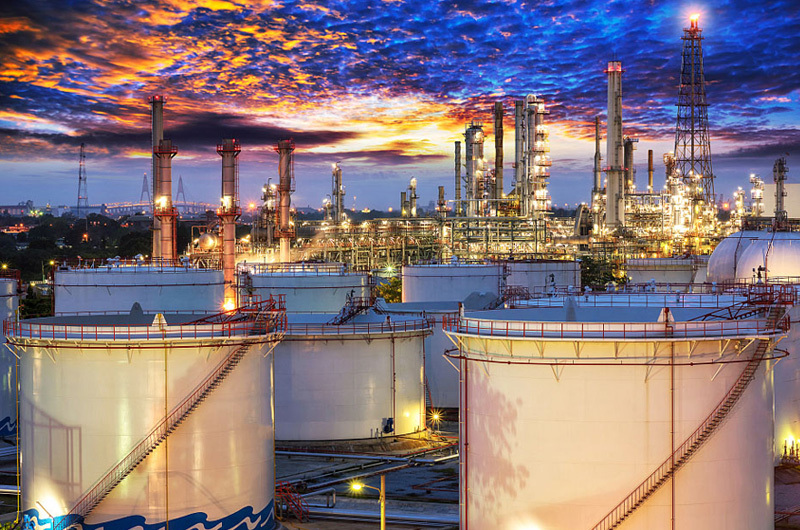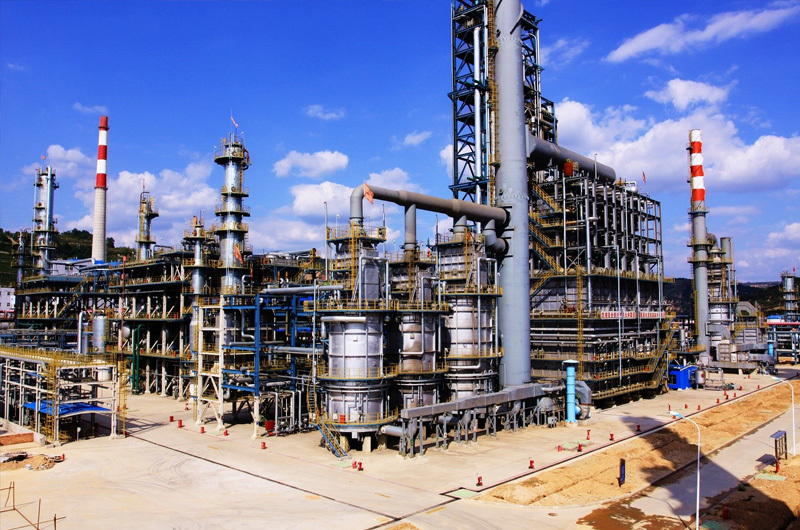
Petrochemical Industry
Industrial gases play a crucial role in the petrochemical industry, providing indispensable support for production, processing safety, and environmental protection in this sector.
GUIDA GAS
Application of Main Gases
Nitrogen: Nitrogen is one of the most widely used gases in the petrochemical industry. It is mainly used for inerting storage tanks and pipelines to prevent flammable and explosive substances from reacting with oxygen in the air. In addition, nitrogen is also used for blowing and cleaning equipment to ensure safety and cleanliness during the production process. In oil recovery enhancement projects, nitrogen is also used for oil displacement to increase oil well production.
Oxygen: Oxygen is used in the petroleum refining process to enrich combustion air, increase furnace temperature and combustion efficiency, thereby reducing fuel consumption and carbon emissions. Meanwhile, oxygen is used in wastewater treatment to enhance oxidation and promote the decomposition of harmful substances.
Hydrogen: Hydrogen is mainly used in petroleum refining for hydrocracking and hydroprocessing processes to improve fuel quality, reduce sulfur content, and increase light oil production.
Carbon dioxide: Carbon dioxide is mainly used in processes such as oil displacement and storage in the petrochemical industry, helping to increase oil well production and reduce carbon emissions.
Standard gas: In the petrochemical production process, many instruments and meters are used to monitor and regulate parameters at various stages, such as temperature, pressure, flow rate, etc. These instruments and meters require regular calibration using standard gases to ensure the accuracy and reliability of their measurement results. Gas detection instruments, gas chromatographs, etc. all require calibration using standard gases.

The Role of Gas in Safety Production
Fire and explosion prevention: The gas industry provides effective technical support for fire and explosion prevention in the petrochemical industry through inerting, blowing, and other means. For example, the inert application of nitrogen in storage tanks and pipelines greatly reduces the risk of fire and explosion.
Leak detection and emergency response: The gas industry also provides advanced leak detection technology and emergency response plans. Once a gas leak or other safety accident occurs, measures can be taken quickly to minimize losses.
Reducing carbon emissions: The gas industry has made significant contributions to reducing carbon emissions in the petrochemical industry by improving combustion efficiency, optimizing process flows, and other means. For example, the application of oxygen in the combustion process significantly improves combustion efficiency and reduces carbon emissions.
Technological Innovation and Industrial Upgrading
Process gas analysis complete system: The application of this system in the petrochemical industry is becoming increasingly widespread, providing strong technical support for safety production, energy conservation and consumption reduction. Through methods such as automatic sampling and qualitative and quantitative analysis of physical property parameters, this system can achieve precise control over the production process.
High performance industrial heat pump technology: The application of this technology in the petrochemical industry provides a new solution for the recovery and utilization of low-energy waste heat, promoting the green transformation and sustainable development of the industry.
The application of industrial gases in the petrochemical industry covers multiple aspects such as production, processing, safety, and environmental protection, providing important support and guarantee for the sustainable development and transformation of this industry.


